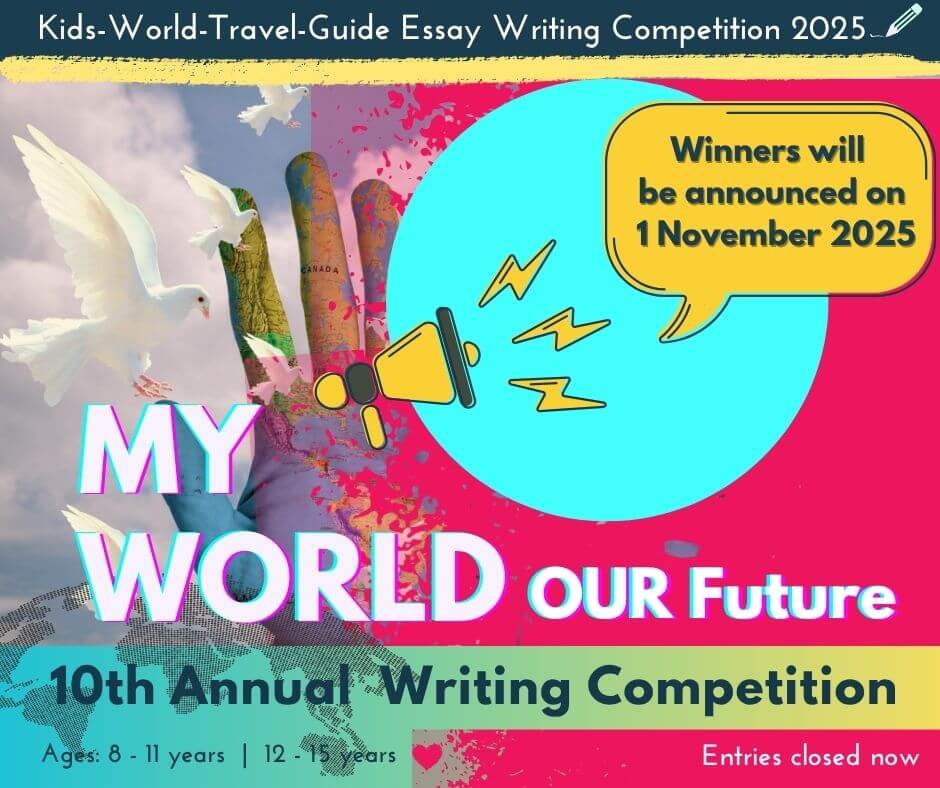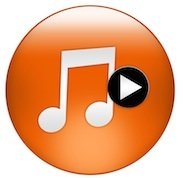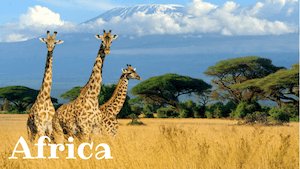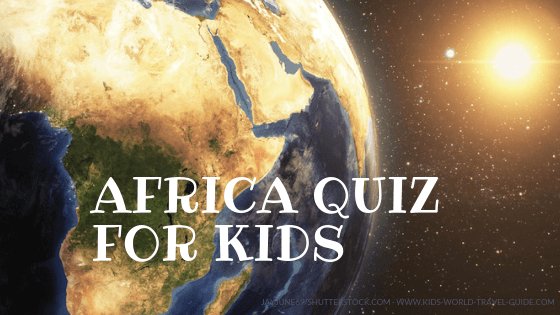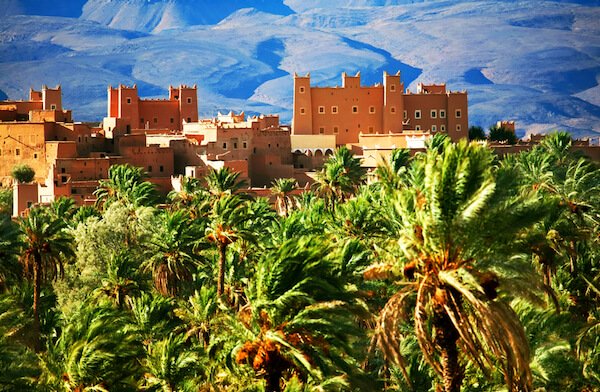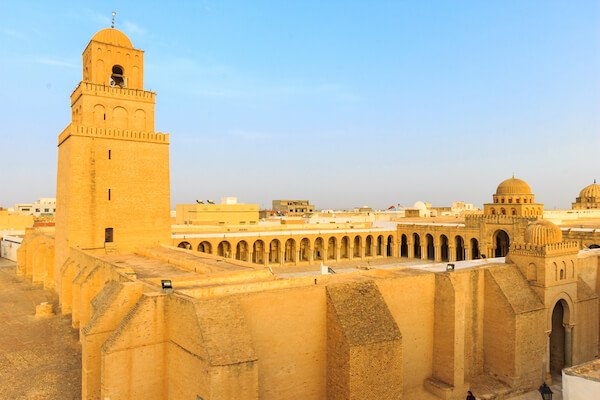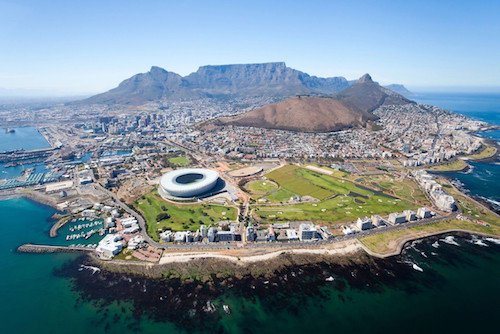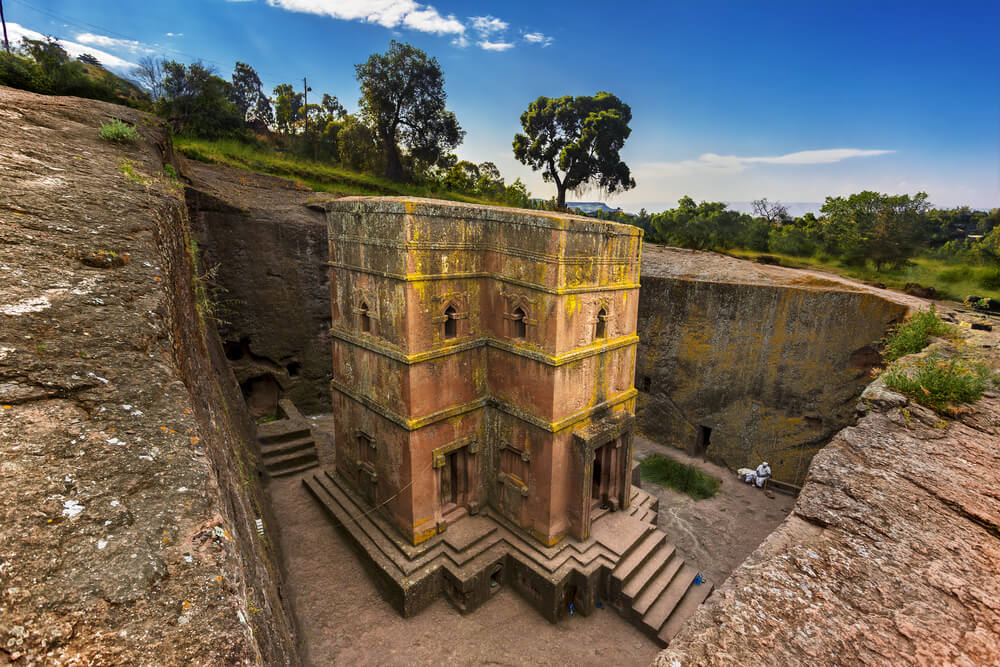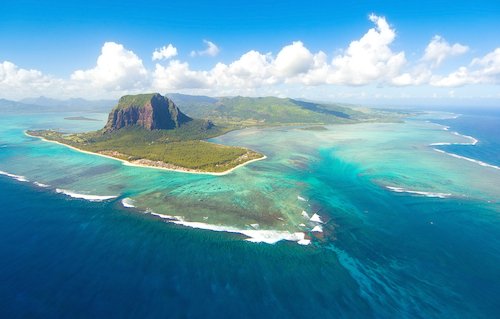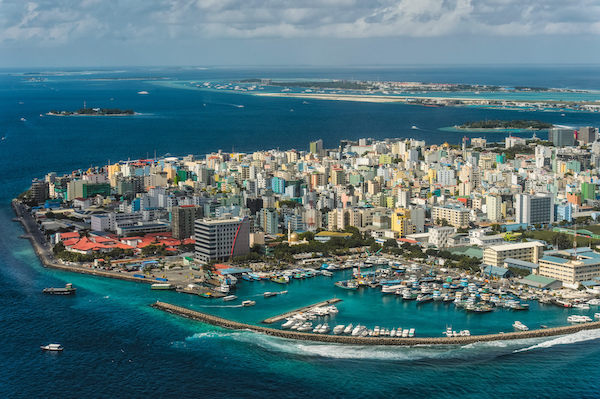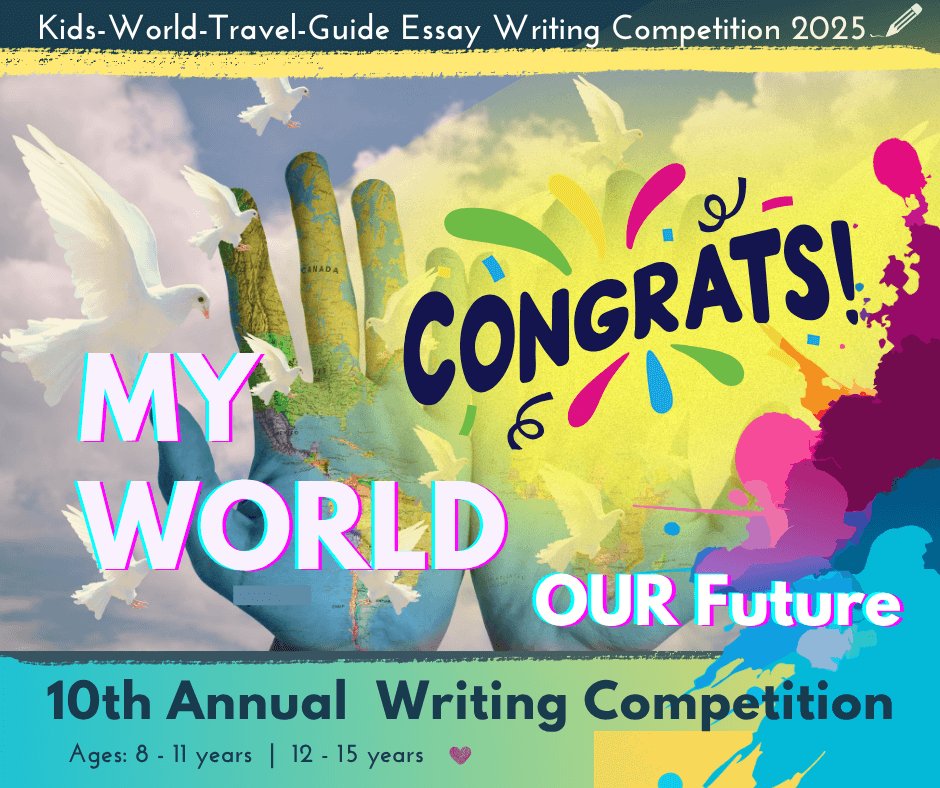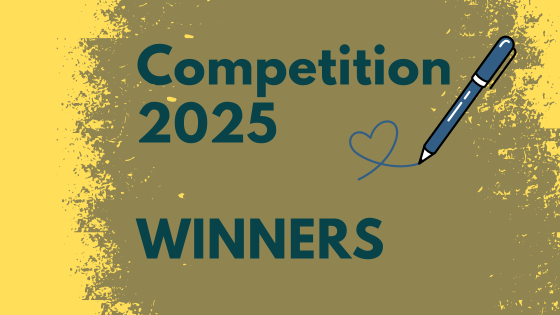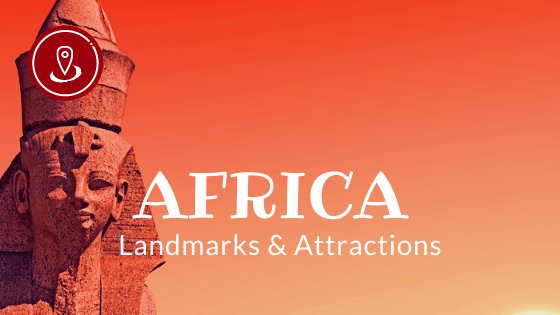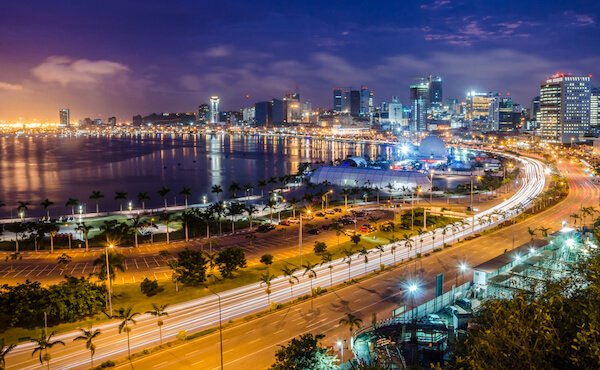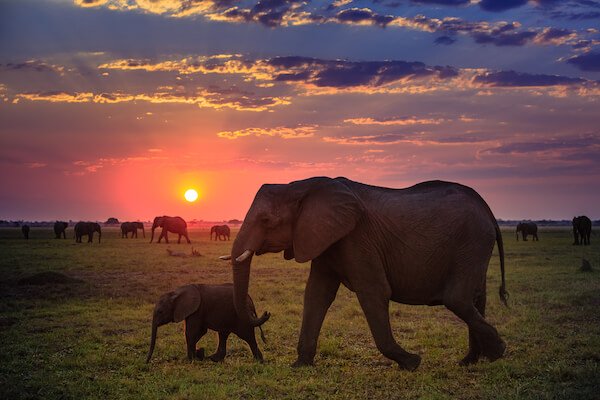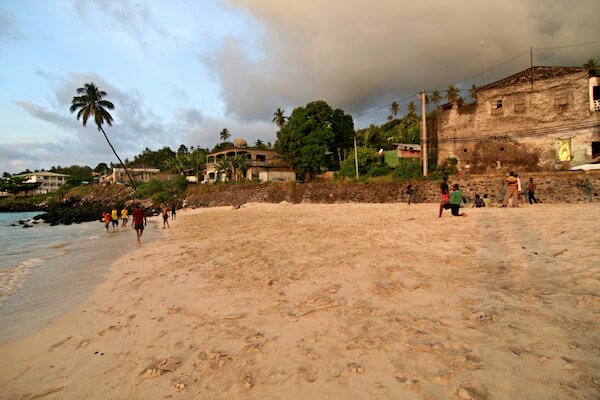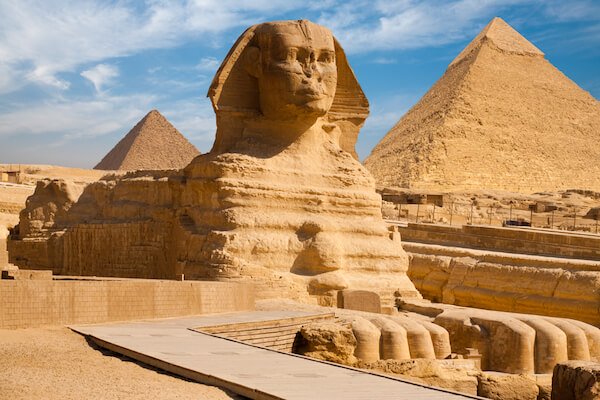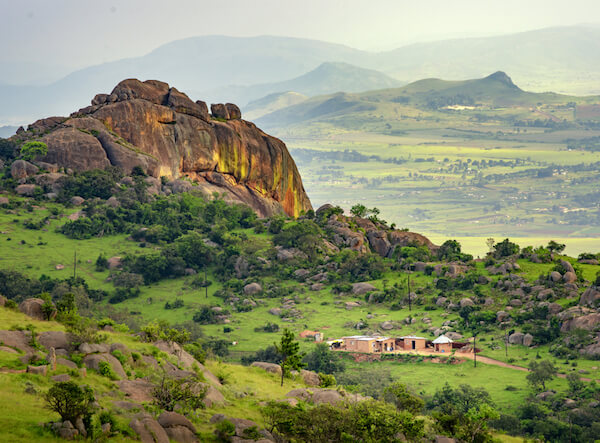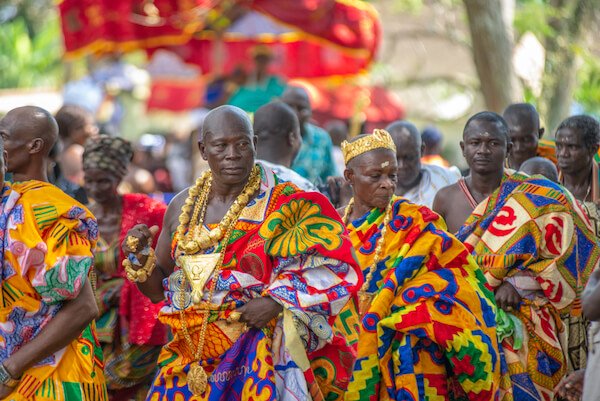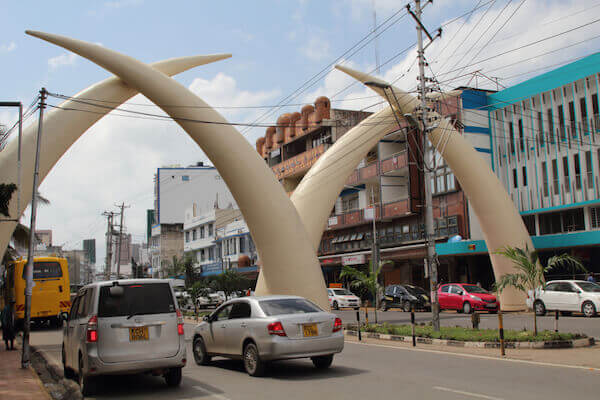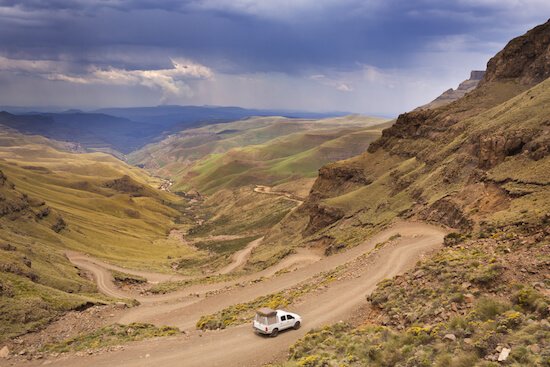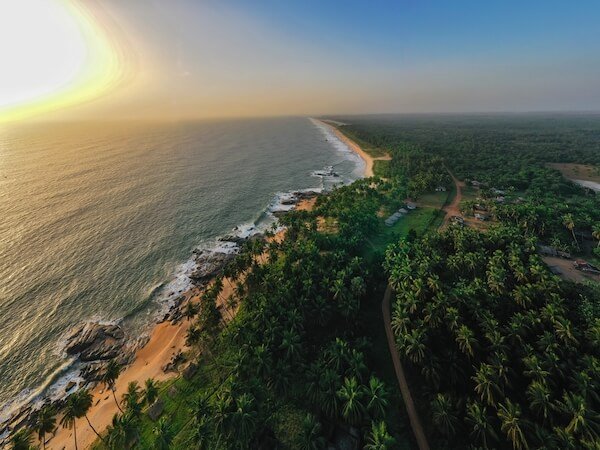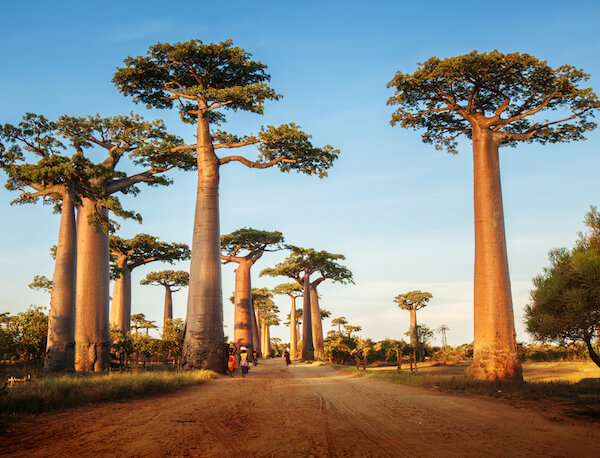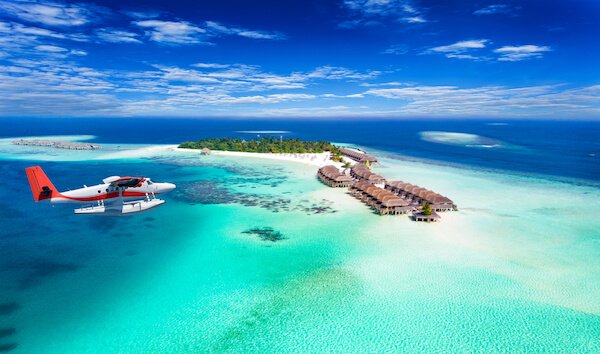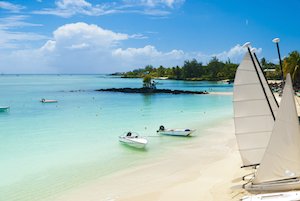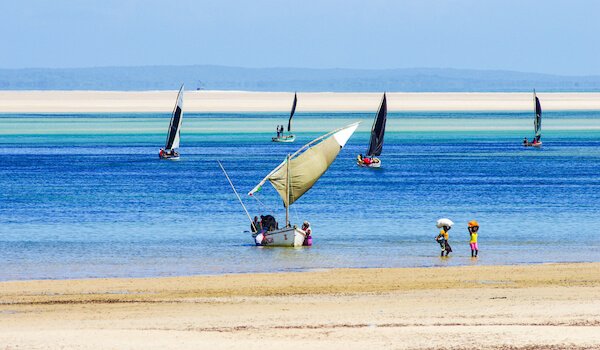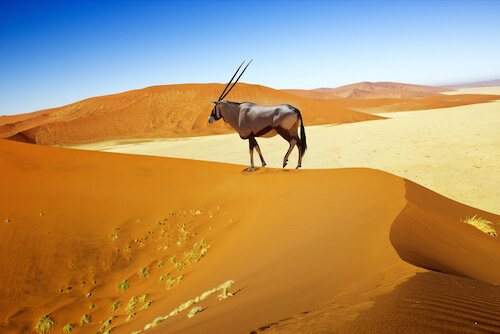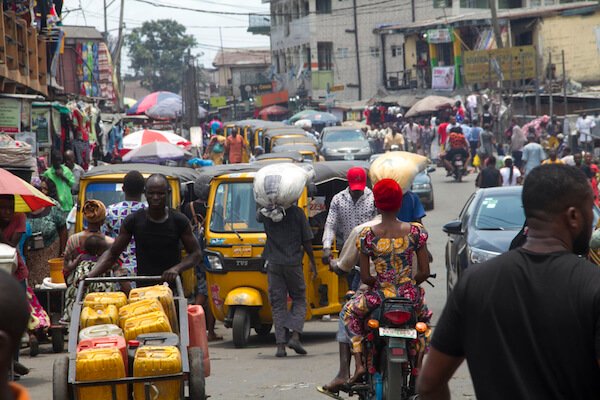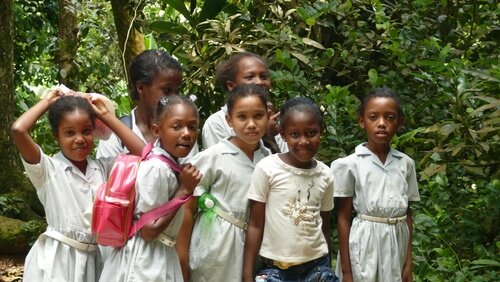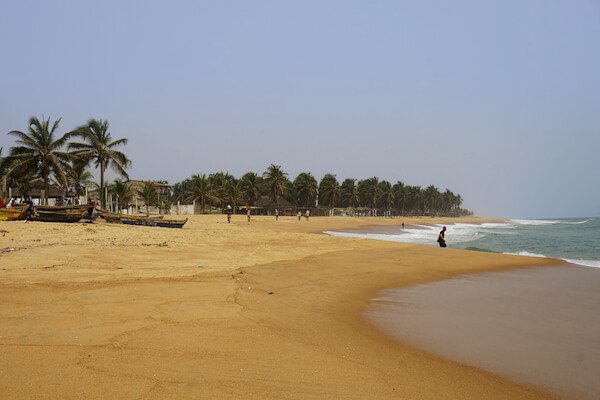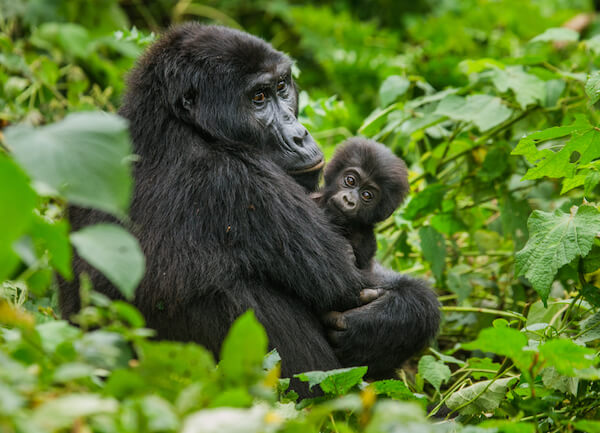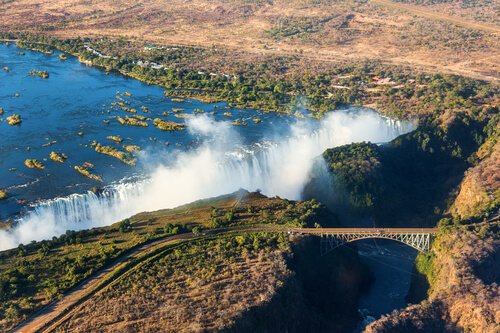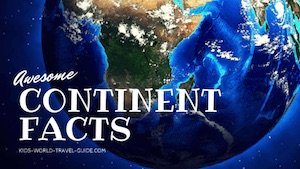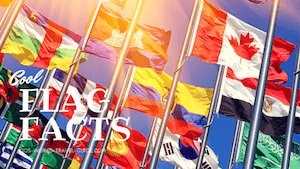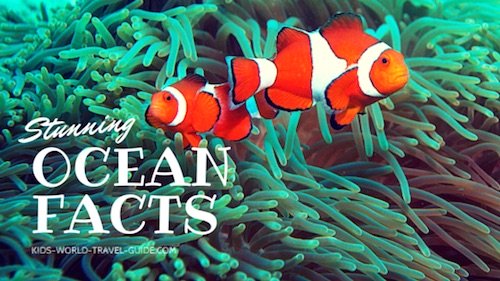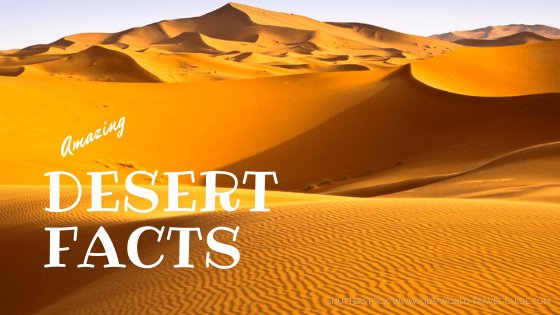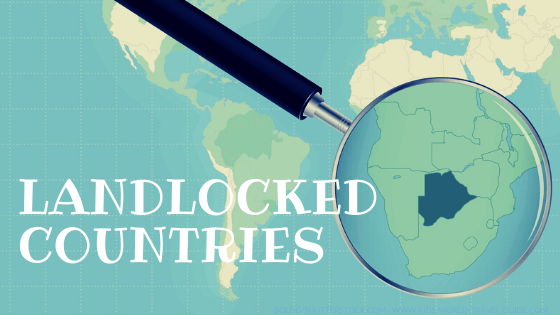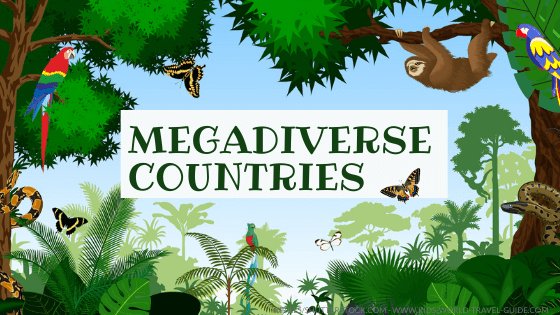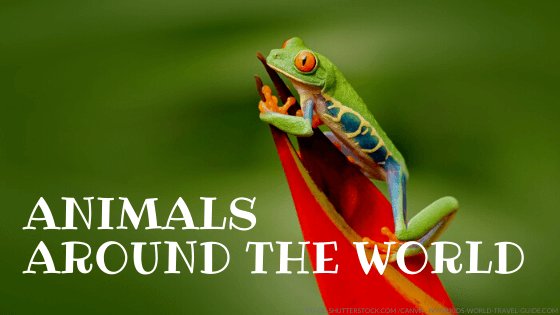Algeria Facts for Kids
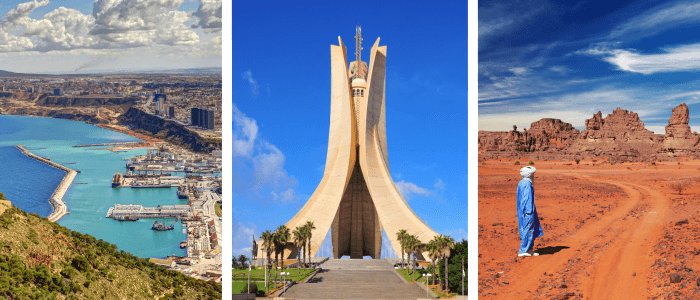 Algeria Facts for Kids: Oran, Martyr's Memorial in Algiers, Sahara
Algeria Facts for Kids: Oran, Martyr's Memorial in Algiers, SaharaAlgeria for Kids
Here are some interesting Algeria facts for Kids which were chosen and researched especially for kids.
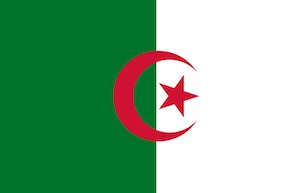 Algeria flag
Algeria flag- Population: 47 million people (2025)
- Capital: Algiers with 3 million inhabitants
- Name: People's Democratic Republic of Algeria, short: Algeria
- Government: Presidential republic
- Language: Arabic (official language), Tamazight or Berber language, French (main business language)
- Religion: Muslim 99% (Sunni)
- Literacy: 81% of the Algerians over 15 years can read and write
- Currency: 1 Algerian dinar = 100 centimes
- National Flag: the Algerian national flag with the green and white colours and the red star symbolises Islam and the country’s struggle for independence
- National Symbols: fennec fox (national animal), iris (national flower).
- National Colours: green and white
- National Anthem: "Qassaman" or "We pledge"
- National Day: 5 July (Independence Day)
- President: Abdelmadjid Tebboune (since 2019, second term since 2024)
- History: Stone age tools in Algeria date back 1.8 million years ago and bones found at Ternefine hint to early human settlements. The ancient kingdom of Numidia was dominated this region from 200 BCE, this kingdom later spread to parts of neighbouring Tunisia, Libya and Marocco. Phoenicians, Romans, Vandals, Byzantines, Arabs, Ottomans and French, all colonised the country. Algeria gained independence from France in 1962.
Algeria Facts | Algeria Map
Algeria Facts for Kids: Algeria is the largest country on the African continent. The North African country borders the seven countries Tunisia, Libya, Niger, Mali, Mauretania, Morocco and Western Sahara and the Mediterranean Sea. The longest border is shared with Mali.
Algeria belongs to the Maghreb states - together with Tunisia, Morocco and Libya. Of these it is the largest country.
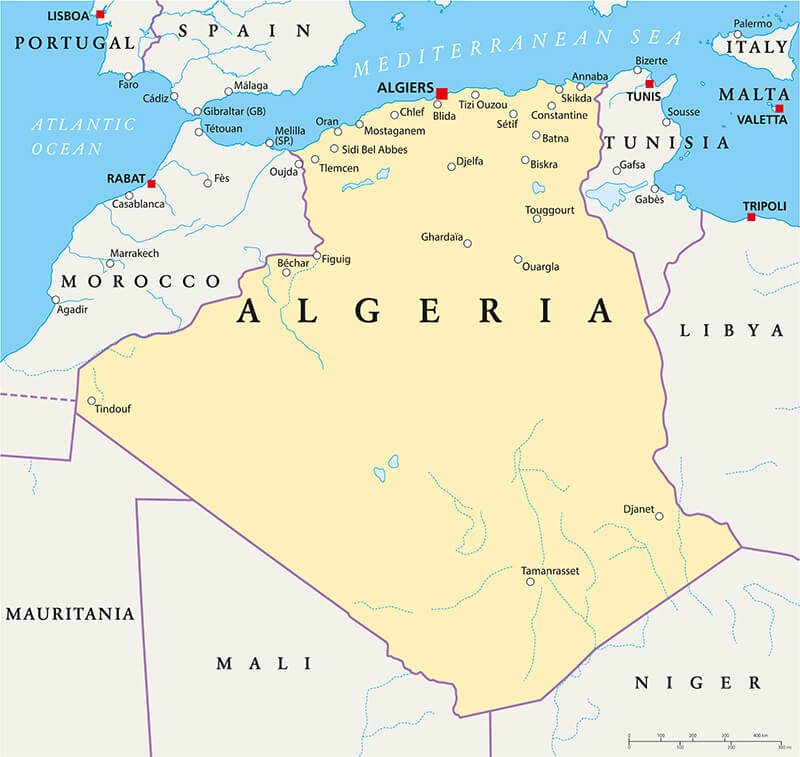 Map of Algeria
Map of AlgeriaOn the map you can also see Algeria's neighbouring countries and the location of the country's capital city Algeria at the Mediterranean Sea's coastline.
The capital city Algiers, a city with three million inhabitants, is located centrally at the Mediterranean Sea's coastline in the north of the country.
A flight to Algiers takes about 4-hours flight from the UK and it takes about 16-hours to fly from New York/USA.
Algeria Geography
Algeria is the tenth largest country in the world and is slightly larger than the Democratic Republic of Congo or almost 3.5 times as large as France or the state of Texas/ USA.
The country lies mainly on a high plateau which is bordered by the Atlas mountains to the north and the Hoggar mountains to the south with a narrow coastal plain along the Mediterranean Sea.
The climate in Algeria varies from Mediterranean in the coastal regions to arid in the desert areas.
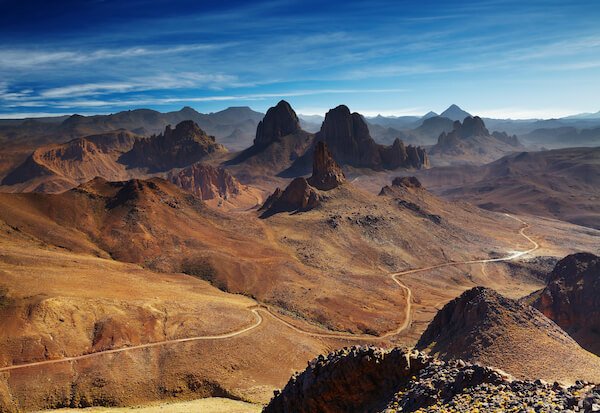 Algerian desert landscape
Algerian desert landscape- About 80% of the country are covered by desert and a significant part of Algeria lies in the Sahara Desert and there are breathtaking landscapes, including the Erg Chebbi dunes and rocky plateaus.
- The highest point in Algeria is Mount Tahat in the Hoggar Mountains with an elevation of 2,908 m/ 9,541 ft.
- About 20% of the Sahara is covered by ergs, which are big massifs of dunes as here the red dunes in the Red Tadrart mountains in Southeastern Algeria.
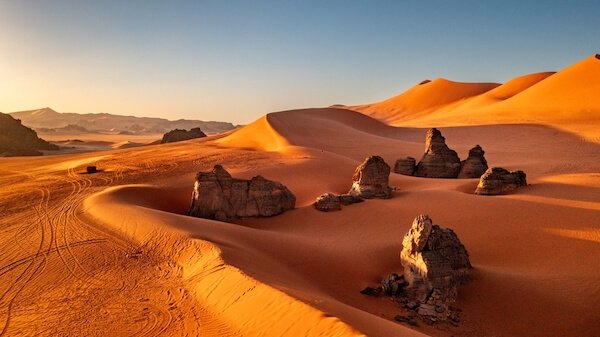 Tadrart Rouge - or Red Tadrart
Tadrart Rouge - or Red Tadrart- The Chelif River is Algeria's longest river and runs over 700 km/ 430 miles through the country's South.
- Among the largest cities in Algeria are Algiers, Oran, Constantine and Annaba, previously referred to as Bon.
- Algeria’s coastline along the Mediterranean Sea stretches over 1,600 km/ 994 miles.
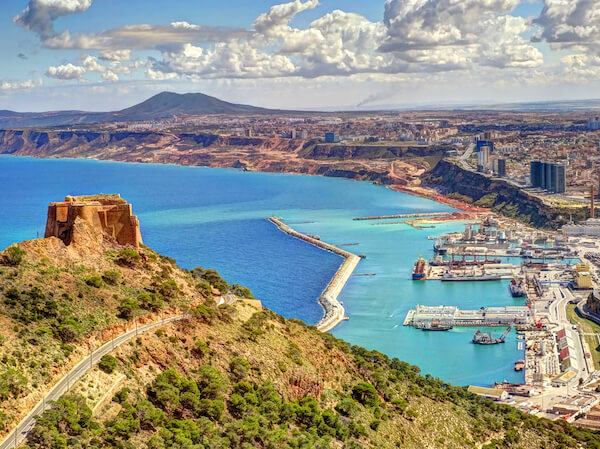 Port of Oran at the Mediterranean Sea
Port of Oran at the Mediterranean SeaThe narrow coastal strip along the Mediterranean Sea is about 1,200 km/ 746 miles long and up to 200 km/ 124 miles wide.
The lighthouse at Cap Carbon is said to be the highest natural lighthouse in Africa and stands on a cliff about 220 m/ 721 ft above sea level.
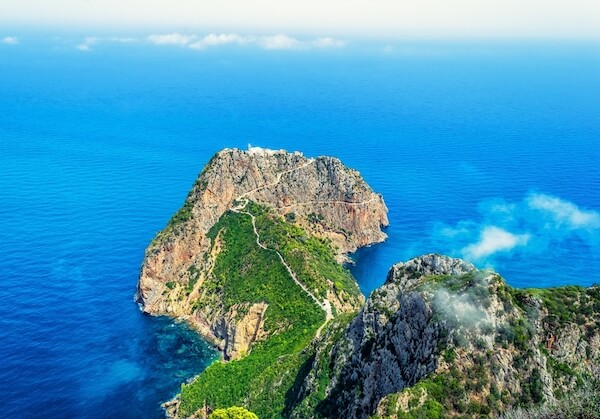 Cap Carbon, north of the port of Béjaïa - image by Zaiare/shutterstock
Cap Carbon, north of the port of Béjaïa - image by Zaiare/shutterstockAlgeria Facts for Kids:
Landmarks and Attractions
Algeria is known for the vast Sahara and desert landscapes, the beaches along the Mediterranean Sea, ancient Roman sites such as Timgad or Djemila as well as the fascinating Algiers casbah and the Great Mosque with the world's tallest minaret. The world's tallest minaret is 265 m/ 870 ft high!
The Great Mosque, known also as Djamaa el Djazaïr, is the world's third largest mosque and can accommodate 120,000 people!
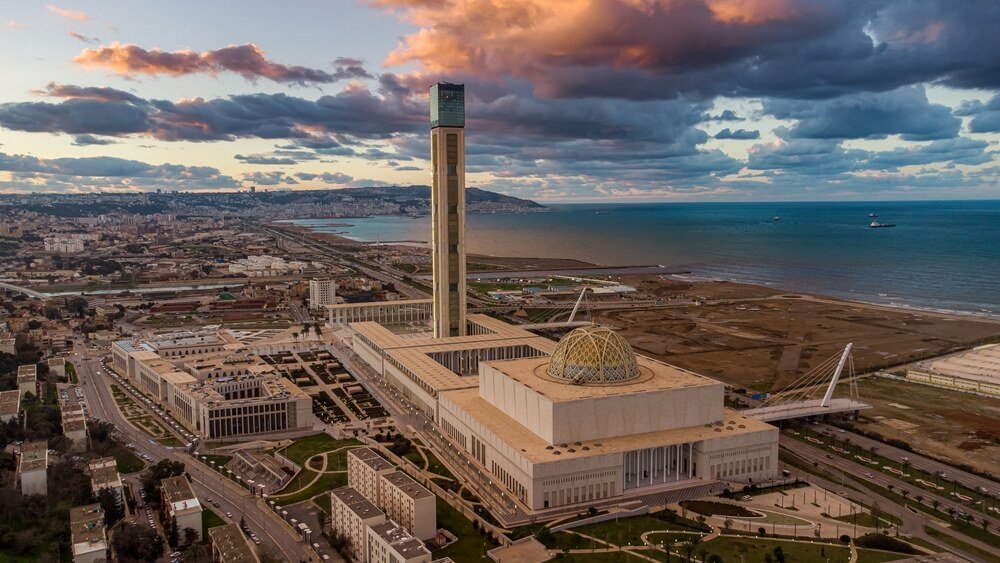 The Great Mosque of Algiers
The Great Mosque of AlgiersAlgeria has seven UNESCO world heritage sites. One of them is the Casbah of Algiers. The historic centre houses the Islamic medina, a walled city, Ottoman-era palaces and traditional houses.
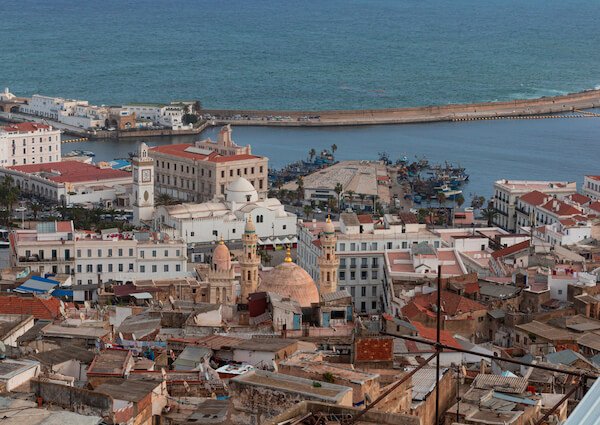 Casbah of Algiers
Casbah of AlgiersOther popular landmarks and family travel destinations are:
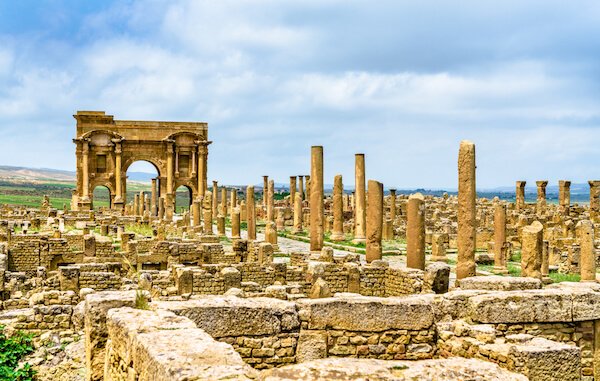 Ancient ruins at Timgad - nicknamed "Pompeii of Africa"
Ancient ruins at Timgad - nicknamed "Pompeii of Africa"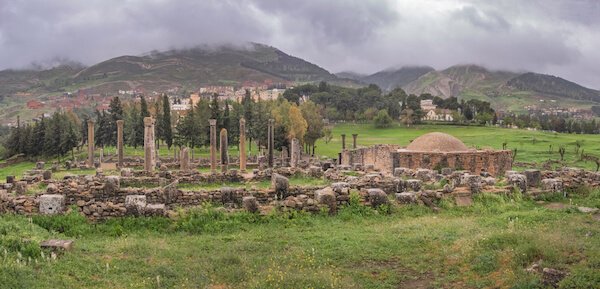 Ruins of the early Christian basilica at Djemila
Ruins of the early Christian basilica at Djemila- Algeria has ten national parks, one of them is El Kala National Park which is known for its wetlands and migratory birds.
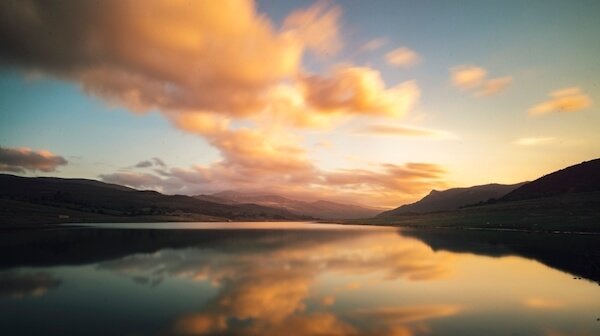
- The Sahara is home to ancient rock art, such as the Tassili N'ajjer, another UNESCO World Heritage Site.
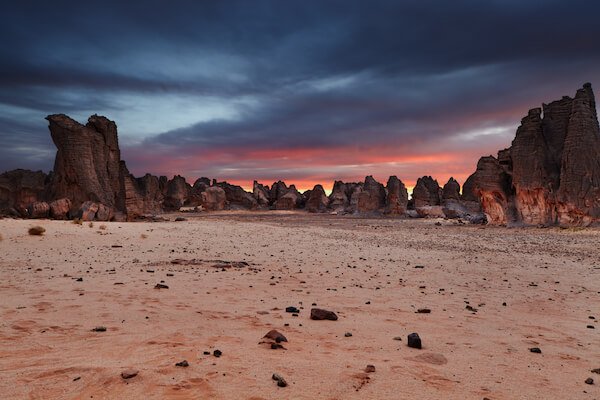 Tassili N'ajjer landscape
Tassili N'ajjer landscape- Tassili N'ajjer National Park contains thousands of prehistoric rock art paintings and carvings that date back to 12,000 BCE and display ancient Saharan life.
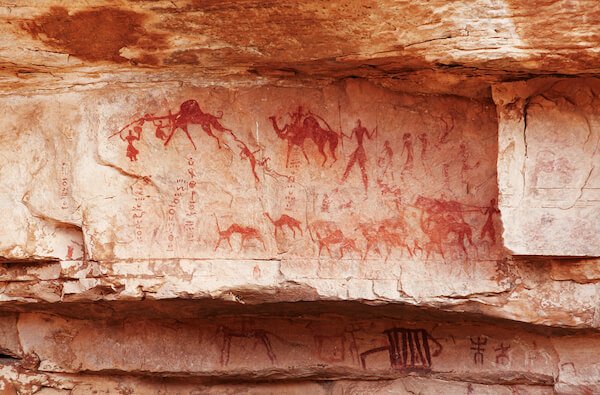 Rockart at Tassili N'ajjer
Rockart at Tassili N'ajjer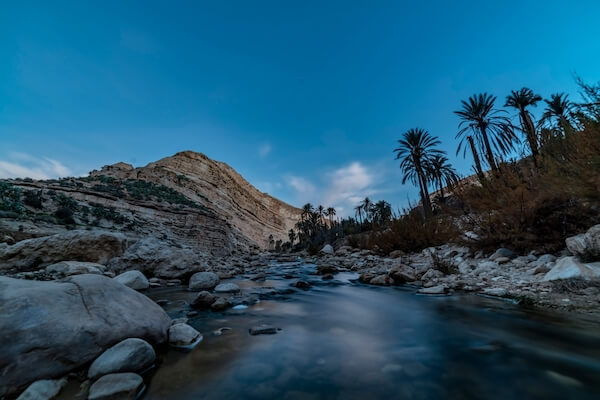 Canyon Ghoufi - image by Zaiare/shutterstock.com
Canyon Ghoufi - image by Zaiare/shutterstock.com- Ghardaïa: A picturesque town in the M’Zab Valley, with unique architecture and vibrant markets.
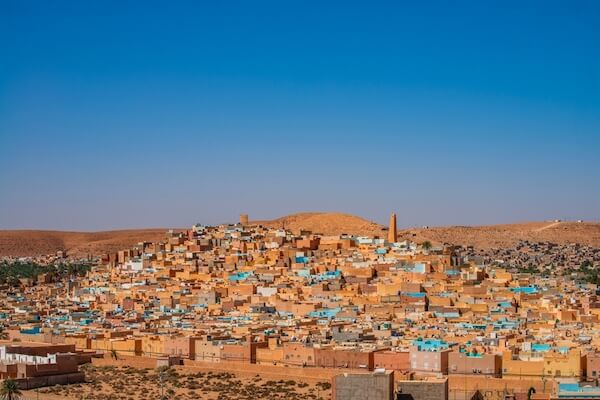 Ghardaia - image by Zaiare/shutterstock.com
Ghardaia - image by Zaiare/shutterstock.com- The Martyr's Memorial in Algiers commemorates the Algerian war which took eight years and led to Algeria's independence from France in 1962.
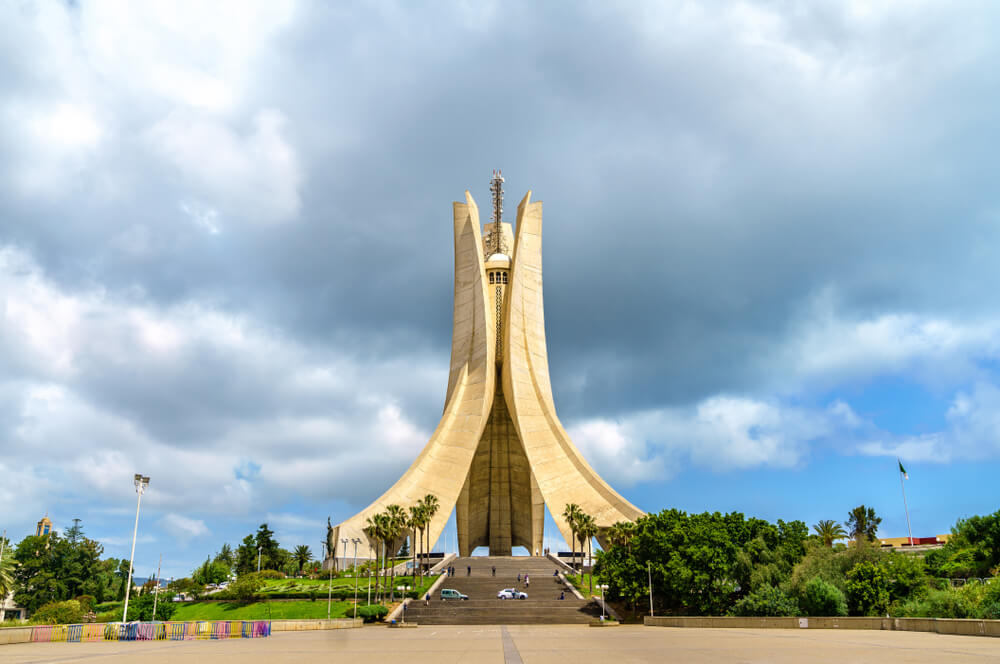 Martyr's Memorial
Martyr's MemorialAlgeria Economy
Algeria Facts for Kids
Algeria is considered the most advanced country of the Magreb (Northwestern African and Arab) states regarding development and innovation.
The country is a leading oil and natural gas exporter and has abundant opportunities for solar and wind energy plants and thus plays an important role in the energy sector. Algeria is the world's 7th largest exporter of natural gas.
Natural resources of Algeria besides oil and gas are iron ore as well as phosphates, uranium, lead and zinc. Petroleum, natural gas as well as fertilizer (made from ammonia) are the main export products of Algeria.
 Farming in the Sahara desert
Farming in the Sahara desertIn the Algerian desert, sand dunes have been converted to farming land in the recent years. Sunshine is abundant all year round in Algeria and water is pumped up and is spread by innovative water sprinkling systems in the dry desert region. The main agricultural products are potatoes, onion, tomatoes, peanuts, dates and water melons.
Italy, Spain, France and China are Algeria's main trading partners.
Algeria Facts For Kids | People
Most of the Algerians live in the northern part of the country and in the major cities and towns along the Mediterranean coast.
The mountainous parts and especially Algeria's south are only very sparsely populated.
The vast majority of the people belong to the Arab Amazigh people. Only about 15% of the Algerians identify as Amazigh, with their own cultural traditions that are different from the Muslim traditions.
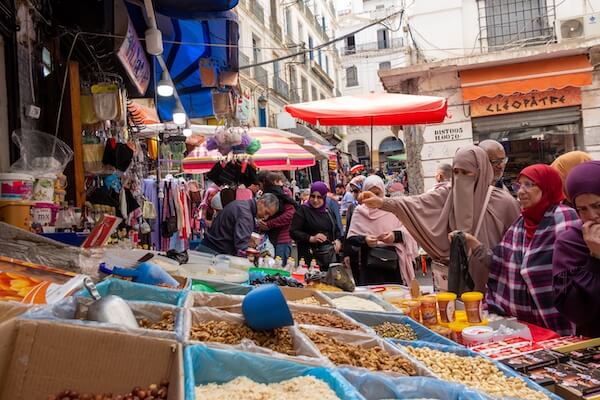 Market in Algiers - Image by Bruno M Photographie/ shutterstock.com
Market in Algiers - Image by Bruno M Photographie/ shutterstock.comThe traditional Algerian dress includes the djellaba, a long robe with a hood, and the burnous, a cloak often made of wool.
Women in rural areas wear brightly colored garments and intricate jewelry, while the haik, a white veil, is common in urban areas.
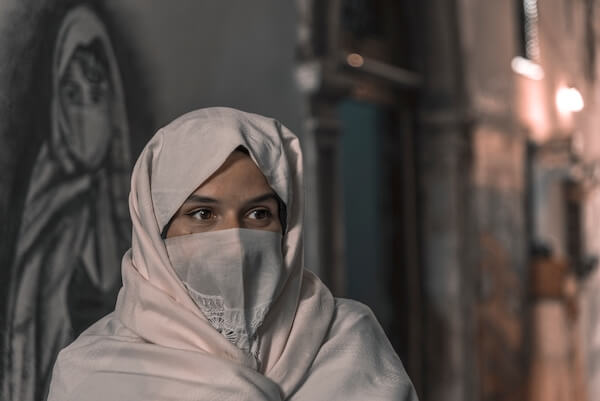 Women with haik in Algiers Casbah - image by Kriter Ahmed/ shutterstock.com
Women with haik in Algiers Casbah - image by Kriter Ahmed/ shutterstock.comIslam is the predominant religion, with the majority being Sunni Muslims. Islamic traditions deeply influence Algerian culture, festivals, and architecture.
Algeria has also a rich Amazigh (formerly referred to as) Berber heritage, they all have distinct languages and dialects, such as Kabyle and Chaoui.
Arabic and Tamazight (Berber) are the official languages in Algeria. French is the unofficial common language and widely spoken due to the colonial past of the country and due to the fact that it is taught in school from Grade 3 onwards.
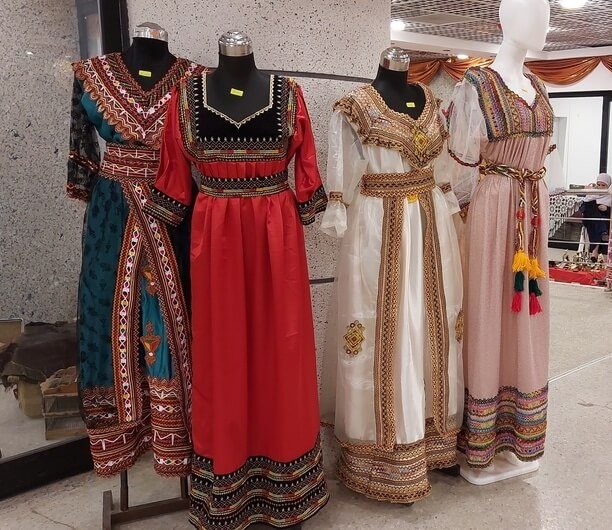 Typical Berber (Amazigh) dress - image by Elena Bee/ shutterstock.com
Typical Berber (Amazigh) dress - image by Elena Bee/ shutterstock.comTraditional Algerian instruments like the ghaita (mouth pipe) and bendir (drum), are played at many Amazing celebrations.
Algeria is also famous for Raï music, that originates in Oran. This folk music style is combines traditional and modern pop music and as such French and Arabic musical tunes.
The main festivals in Algeria are Yennayer (Amazigh New Year celebrations in January), the Islamic holidays Aid el-Fitr and Aid el-Adha as well as harvest festivals such as the Cherry Festival in Tlemcen, the Strawberry Festival in Jijel or the Ath Khlili Pottery Festival in Mâatkas.
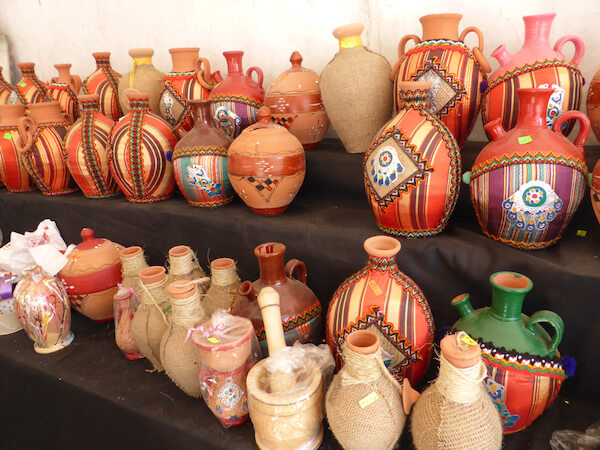 Traditional Amazigh pottery in Algeria
Traditional Amazigh pottery in AlgeriaSoccer/ football is the most popular sport in Algeria. The national soccer team is called the "Desert Foxes".
Playing cards and chess is a popular past times in many families.
Algeria houses many Sahrawi refugees who fled their home in Western Sahara due to the conflict with Morocco. There are several refugee camps in southwestern Algeria.
Food in Algeria | Facts about Algeria
Cereals such as couscous, pasta, bread as well as vegetables such as potatoes, carrots, tomatoes, aubergines (eggplants), zucchini and peppers are staple food in the cuisine in Algeria. Lamb, chicken and beef is also eaten and prepared for many dishes.
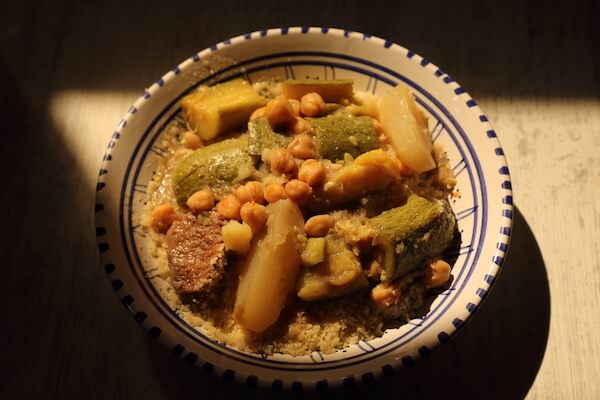 Algerian couscous
Algerian couscousAlgerian cuisine blends Berber, Arab, Ottoman, and French influences. Here are some typical Algerian food and dishes:
- Couscous: The national dish, often served with meat and vegetables.
- Desiret: soft dough cake with a filling of almonds that are flavored with lemon and soaked in a mixture of honey and orange blossom water.
- Dolma: stuffed grape leaves or stuffed vegetables made with zucchini, eggplant, tomatoes, peppers or cabbage that have been filled with rice, sometimes minced meat, onions and spices
- Batata fliou: potato stew with pepper mint
- Makrout: almond filled dates scented with cinnamon and orange blossom water are often enjoyed with peppermint tea.
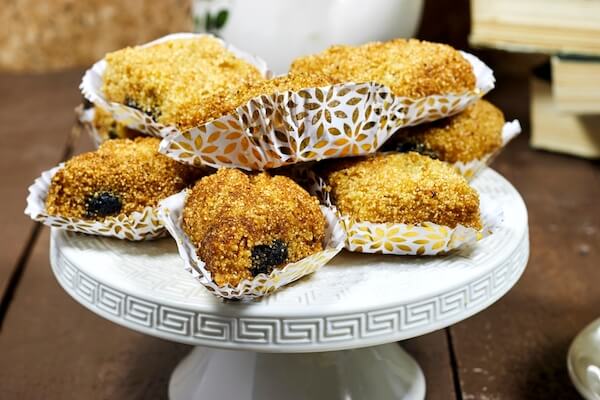 Makrout
Makrout- Rashta: noodle dish made with pasta, ricotta, often including chicken, chickpeas, kale and zucchini. Served with white sauce that is cinnamon flavoured.
- Gheribia: Algerian dry cake or shortbread
Animals in Algeria
Algeria has a diverse wildlife. There are fennec foxes, Barbary macaques, the dorcas gazelles and the Nubian ibexes that mainly can be found in the desert areas.
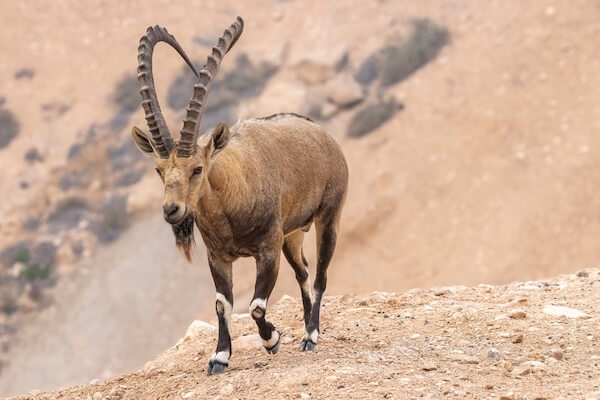 Nubian ibex
Nubian ibexThe cedar forests in the mountains of Northern Algeria are home to endangered species such as the Barbary leopard and Atlas deer.
Algeria Facts for Kids: Resources
Sources for Algeria Facts for Kids page:
- Central Intelligence Agency. "Algeria". The World Factbook. Last updated 30 September 2025. Last accessed 28 October 2025
- Cyril Fourneris and Mario Bowden. "From Sand to Spud" Africa News. Last updated 13 August 2022. Last accessed 28 October 2025
- Aljazeera. " Algeria inaugurates world’s third-largest mosque ahead of Ramadan." Aljazeera. 26 February 2024. Last accessed 28 October 2025
Image Credits on Algeria Facts: photo stock from shutterstock and wikicommons, if not otherwise stated.
We hope you enjoyed reading our Algeria Facts. Please bookmark this page and spread the word. We will add more information in the near future.
Popular Pages
Winning Essays 2025
|
Please take note
|
More Countries in Africa
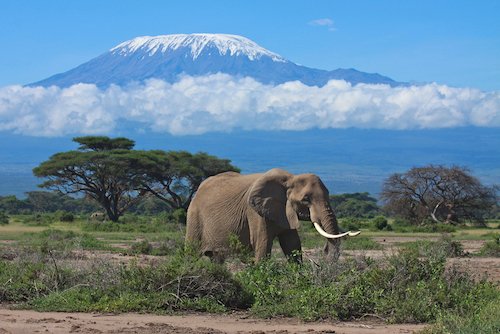 Tanzania
TanzaniaLike what you read?
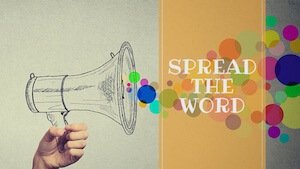
|
Simply share the html code below. Copy and paste onto your website, blog or Facebook page: <a href="https://www.kids-world-travel-guide.com/algeria-facts-for-kids.html">Kids World Travel Guide: Algeria Facts for Kids</a> |
Like us on Facebook
Competition 2025
CLOSED
